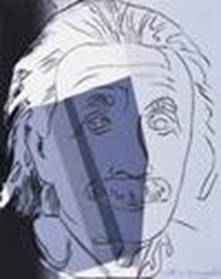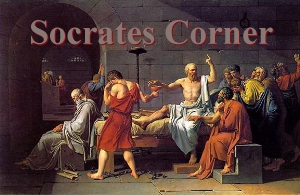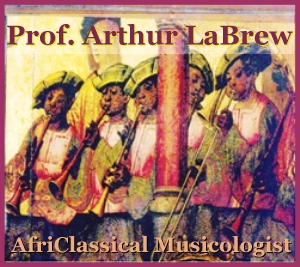On Einstein’s annus mirabilis
Everyone sits in the prison of his own ideas: he must burst it open, and that in his youth, and so try to test his ideas on reality.
~ Einstein
Prologue to Einstein’s Five Annus Mirabilis (“miracle year”) Papers
There are many lessons we should learn from reading and studying the tumultuous life and transcendent work of physicist Albert Einstein (1879-1955), here are eleven that I found particularly demonstrative – 1. Follow your Curiosity; 2. Perseverance is Priceless; 3. Focus on the Present; 4. The imagination is Powerful; 5. Make Mistakes (Einstein said, “Anyone who has never made a mistake has never tried anything new”); 6. Live in the Moment; 7. Create Value; 8. Don’t be repetitive; 9. Knowledge Comes >From Experience; 10 Learn the Rules and then Play Better; 11. Weak People Revenge. Strong People Forgive.
The year 1900 was a critical year for a young Albert Einstein. Although he had graduated from the prestigious Zürich Polytechnic Institute, yet he would be essentially blacklisted and denied academic faculty job opportunities, not because he wasn’t qualified, but because he was often bored with his conventionally, functionary professors many of which couldn’t think outside the box, who tried to force him into a conventional box and didn’t encourage Einstein’s genius so he often skipped classes preferring to study advanced subjects on his own. (Throughout human history how often are true geniuses like Einstein marginalized by their superiors and society). Academic apparatchiks criticized Einstein for his radical and innovative intellectualism and even marked him down; one professor in particularly, Heinrich Weber even wrote a bad letter of recommendation which consequently caused Einstein to be denied every academic teaching job that he applied to. In despair he would later write, I would have found [a job] long ago if Weber had not played a dishonest game with me. For now, Einstein’s bond with his girlfriend, Maric developed, yet on the other hand his parents fervently opposed the relationship seemingly on religious grounds. (Maric was a Serbian from Eastern Orthodox Christian background).
1902 would be another critical year for young Einstein where his personal and professional life would collide like two neutrons in the Hadron Collider as his transcendent ideas in physics became manifested that would turn the world upside down, yet Einstein’s scientific revolution would often push young precocious scientist into the abyss of depression and despair. On the one hand, now it would be infeasible to marry his love Maric without a suitable job allowing him to economically sustain his family. Yet on the other hand, his prospects for an academic appointment was sabotaged by Professor Heinrich Weber’s unfair recommendation, also his father’s business failed that year. Therefore, Einstein in his despairing situation was forced into ordinary occupations teaching children, which to add insult to injury, he would be fired even from these lowly jobs.
In late 1902, Einstein’s breakthrough moment would finally come when family friend, Marcel Grossman, got him a job as a clerk in the Swiss patent office in Bern. Yet, as would become a lachrymose leitmotif in Einstein’s life, joy would inevitably be mixed with the bitter gall of depression and despair when at this same time Einstein’s father became grievously sick, but still gave his blessing for his son to marry Maric just before he died. Einstein’s relationship with his mother and father was very close, yet complex, manifesting itself in an almost Freudian sense of psychopathological despair and existential repression. Thus, Einstein would for years be haunted by his belief that his father had died believing his son a failure, an inaccurate self-diagnosis on Einstein’s part which reminds me of a famous aphorism he would say years later, “Everybody is a genius. But if you judge a fish by its ability to climb a tree it will live its whole life believing that it is stupid.”
Even though this was not the position Einstein had struggled for years at the Zurich Polytechnic Institute to achieve, yet with his new job as a clerk at the Bern patent office he now had the financial stability to make him assured enough to marry Maric, which he did on January 6, 1903. Two children would come from this union – Hans Albert (b. 1904) and Eduard (b. 1910). In examining Einstein’s biography it would soon become evident that his lowly position at the patent office would be an ironic blessing, a silver lining in the stormy, tumultuous life of this young physicist that would soon launch Einstein’s one man revolution in physics which would soon turn the scientific community and the world upside down.
1905: Einstein’s Annus Mirabilis
Einstein pattern for the next three years was now set – First, he would quickly complete his daily perfunctory clerk duties analyzing patent applications. Second, this allowed him time to daydream about the prophecies and visions that had preoccupied him as child: What would happen if you raced alongside a light beam? In the solitude of the Bern patent office Einstein would spend hours, days, weeks, months reminiscing about his studies on his intellectual mentor James Clerk Maxwell at the Zurich Polytechnic Institute and his theoretical equations, which describe the nature of light, yet like Einstein would do time and time again studying the work of others, he would improve upon his predecessor’s scientific ideas and make them transcendent.
This technique is reminiscent of Einstein’s rule: Learn the Rules and then Play Better. For example, from his studies of Maxwell’s equations on the nature of light, Einstein uncovered something Maxwell missed – specifically, that the speed of light is a constant and remains the same no matter how fast one moves. This discovery would bring Einstein in conflict with another, perhaps the Titan of Science – Sir Isaac Newton and his theory on the laws of motion, however, at this point a comparative analysis of what would become Einstein’s theory of relativity vs. Newton’s laws of motion would have to wait since Newton had no absolute velocity in his theory of motion, and Einstein had yet to work out the geometry. Undaunted by this problem, Einstein was compelled to create his principle of relativity: “the speed of light is a constant in any inertial frame (constantly moving frame).”
After three years of Herculean scientific struggles unrivaled in human history, Einstein would publish these four “miracle year” papers in the Annalen der Physik [Annals of Physics] (1905); pathbreaking treatises which would change the progression of modern physics from this point to modern times. Below are Einstein’s papers in summary:
- 1. Über einen die Erzeugung und Verwandlung des Lichtes betreffenden heuristischen Gesichtspunkt (“On a Heuristic Viewpoint Concerning the Production and Transformation of Light”), in which Einstein applied the quantum theory to light in order to explain the photoelectrical effect. If light occurs in tiny packets (later called photons), then it should knock out electrons in a metal in a precise way. (Ironically, Einstein would win his long-awaited Nobel Peace Prize on this paper in 1921, and not on his work on Special Relativity which today he is most celebrated for because his innovative theories had yet to be verified by the scientific community).
- 2. Über die von der molekularkinetischen Theorie der Wärme geforderte Bewegung von in ruhenden Flüssigkeiten suspendierten Teilchen (“On the Movement of Small Particles Suspended in Stationary Liquids Required by the Molecular-Kinetic Theory of Heat”), in which Einstein offered the first experimental proof of the existence of atoms. By analyzing the motion of tiny particles suspended in still water, called Brownian motion, he could calculate the size of the jostling atoms and Avogadro’s number (also known as Avogadro’s law).
- 3. Zur Elektrodynamik bewegter Körper (“On the Electrodynamics of Moving Bodies”), in which Einstein laid out the mathematical theory of special relativity.
- 4. Ist die Trägheit eines Körpers von seinem Energieinhalt abhängig? (“Does the Inertia of a Body Depend Upon Its Energy Content?”), submitted almost as an afterthought, which showed that relativity theory led to the equation E = mc2. This provided the first mechanism to explain the energy source of the Sun and other stars.
As if this stupendous scientific feat of publishing four game-changer papers in physics wasn’t great enough, also in 1905 Einstein submitted his doctoral thesis in physics in that same annus mirabilis!
 Einstein’s theory of special relativity was not unique, but like much of Einstein’s innovations in physics he improved upon the work of others making existing scientific theories infinitely better; here for example, both scientists Henri Poincare and Hendrik Lorentz had done work on special relativity, yet it would be Einstein who put together the disparate parts of special relatively into a coherent and viable scientific theory which he rightly understood was a universal law of nature, not a curious figment of motion in the ether, as both Poincaré and Lorentz had hypothesized. Although Newton’s laws of motion and Maxwell’s theory of light were the two towering pillars of modern physics in the 19th century, nevertheless Einstein’s singular genius understood that that Newton and Maxwell’s ideas contradicted each other, thus one must fall and soon both History and Destiny would judge the triumph of his years of scientific rigor ending the Age of Newton and ushering in the new Age of Einstein.
Einstein’s theory of special relativity was not unique, but like much of Einstein’s innovations in physics he improved upon the work of others making existing scientific theories infinitely better; here for example, both scientists Henri Poincare and Hendrik Lorentz had done work on special relativity, yet it would be Einstein who put together the disparate parts of special relatively into a coherent and viable scientific theory which he rightly understood was a universal law of nature, not a curious figment of motion in the ether, as both Poincaré and Lorentz had hypothesized. Although Newton’s laws of motion and Maxwell’s theory of light were the two towering pillars of modern physics in the 19th century, nevertheless Einstein’s singular genius understood that that Newton and Maxwell’s ideas contradicted each other, thus one must fall and soon both History and Destiny would judge the triumph of his years of scientific rigor ending the Age of Newton and ushering in the new Age of Einstein.
Epilogue to Einstein’s Space Time
Originally Einstein’s 1905 papers were disregarded by physicists and scientists of the academy, however, like all of Einstein’s life, in the midst of depression and despair there was always a silver lining, a hidden blessing. Here, circumstances radically changed in favor of Einstein after his ideas won the approval of Max Plank, the leading physicist of his era and the originator of the quantum theory. Planck’s laudatory observations of Einstein’s scientific substance of his experiments would progressively validate all his theories, thus Einstein was given the honor to deliver a series of lectures at several international scientific symposiums, including the Solvay Conferences, where his singular genius would shine bright as his celebrity ascended throughout the academic world. Following his successful lectures Einstein was presented a succession of faculty positions at increasingly prominent institutions, including the University of Zürich, the University of Prague, the Swiss Federal Institute of Technology, and finally the University of Berlin, where he served as director of the Kaiser Wilhelm Institute for Physics from 1913 to 1933.
Throughout Einstein’s illustrious career, particularly with his theory of special relativity stood the indomitable problem of math – Do the numbers verify special relativity? – This was always a vexing leitmotif that would obsess Einstein for the rest of his life. Thus, challenged with an assortment of mathematical problems, the physicist if disturbed with the problem of which geometry is, as Einstein says, in “correspondence with a ‘real’ object,” or true of the real world. “According to the general theory of relativity, the geometrical properties of space are not independent,” Einstein writes, “but are determined by matter.” Therefore using deductive reasoning the logical progression is that our expectations regarding the dissemination of matter control the character of the universe.
On the supposition of a world “not inhabited by matter everywhere,” in whose unlimited space “the average density of matter would necessarily be nil,” Einstein understands that we can visualize “a quasi-Euclidean universe” comparable to “a surface which is irregularly curved in its individual parts, but which nowhere departs appreciably from a plane: something like the rippled surface of a lake.” Nevertheless if the “average density of matter… differs from zero, however small may be that difference, then the universe cannot be quasi-Euclidean.” It would be spherical (or elliptical) if the matter were consistently distributed; but “since in reality the detailed distribution of matter is not uniform,” Einstein concludes that “the real universe will deviate in individual parts from the spherical, i.e., the universe will be quasi-spherical. But it will be necessarily finite.”
According to what Einstein refers to as “the four-dimensioned space-time continuum” (which involves three space coordinates and one time coordinate) time is purely one dimension among others, therefore Newton’s theory time and space are also given similar analysis. “Times and spaces,” Newton writes, “areas it were, the places as well of themselves as of all other things. All things are placed in time as to order of succession; and in space as to order of situations.” Einstein evaluates Newtonian mechanics for its “habit of treating time as an independent continuum,” yet Newton like Einstein gives the understanding of space and time as co-equal dimensions, though he understands them as separate phenomena.
If it is possible to synthesize Einstein’s five Annus Mirabilis papers into two practical aphorisms, it would be these – If A is success in life, then A equals X plus Y plus Z. Work is X; Y is play and Z is keeping your mouth shut; and The more I study science the more I believe in God.
*N.B.: This essay is based in part on ideas from Encyclopedia Britannica Great Books of the Western World, Robert Maynard Hutchins, Editor-in-Chief (University of Chicago, 1952), Vol. 2, Chap. 23 – Eternity; Vol. 2, Chap. 37 – Idea; Vol. 3, Chap. 80 – Space; Vol. 3, Chap. 93 – Time. The Oxford Guide to Philosophy, Ted Honderich [Editor], (Oxford University Press, 2005), pp. 237, 801. See generally article on Albert Einstein, Encyclopedia Britannica.
Ellis Washington is a former staff editor of the Michigan Law Review and law clerk at the Rutherford Institute. He is an adjunct professor at the National Paralegal College where he teaches Constitutional Law, Legal Ethics, Contracts and Advanced Legal Writing.
A founding board member of Salt and Light Global, Washington is a co-host on “Joshua’s Trial,” a radio show of Christian conservative thought.
A graduate of John Marshall Law School and post-grad work at Harvard Law School, his latest law review articles include: “Nigger Manifesto: Ideological Racism inside the American Academy” (forthcoming) and “Social Darwinism in Nazi Family and Inheritance Law.”
Washington’s latest book is a 2-volume collection of 230 essays and Socratic dialogues – “The Progressive Revolution” (University Press of America, 2013). Visit his new law blog, NiggerManifesto.com (formerly EllisWashingtonReport.com), an essential repository dedicated to educating the next generation of young conservative intellectuals.
© Copyright 2015 by Ellis Washington
http://www.renewamerica.com/columns/washington/150613
Category: Commentary






